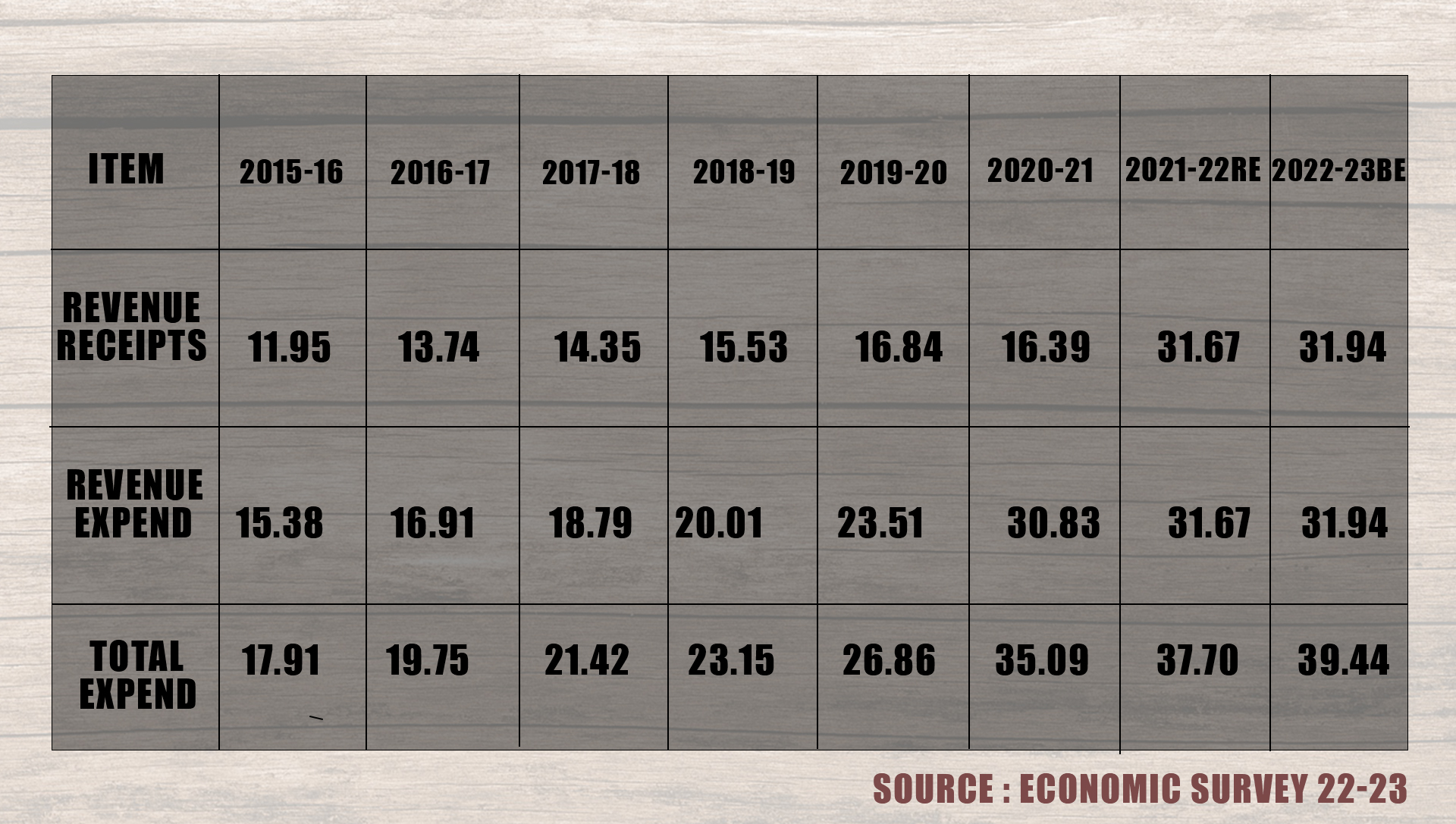


The GST is finally coming up the curve; the rates are getting stabilised and the systems by and large streamlined. GST collection is doing more than expected in recent months with the collection reaching an all-time high of Rs. 1.68 lakh crores in April 2022. At the outset, both indirect and direct tax collections have been growing often disproportionately more than GDP growth which is another subject. The collection growing in the face of reducing tax rates shows increasing widening and deepening, and better tax compliances and enforcement.
The question that I would like to pose is tangential. The Government is doing quite well on the revenue front, is it similarly managing and controlling expenditure with a hawk’s eye?
I hypothesise that we have been successful in flogging the revenue side, but quite liberal if not lax on the expenditure side. Ideally, expenditure should be more in the control of Governments than revenue, but Governments seem more comfortable taxing the revenue than squeezing their expenditure. At the state government level, the controls are even laxer as that is not even a goal.
Waxing Expenditure
I am reproducing the below expenditure trend which always escapes the glare. We can observe from the Table that the revenue is highly malleable to meet the expenditure with the convergence happening around the Revised Estimate time.

It follows the Parkinson’s law of Revenue raising to meet the expenditure. Covid had its impact on the central government expenditure but it seems to have its ratchet effect with expenditure staying at new levels. The government has been singularly focused on tightening tax collection, curbing evaders through raids and vigilance, and with stretch targets for its officers. Do we see similar pressure in managing expenditure?
The government has been trying to reduce expenditure on subsidies and freebies through curbing bogus claims and direct payments to both beneficiaries and panchayats but at the same time opening newer avenues. Expenditure management in Government can be seen as the management of processes, projects and programmes. The processes are getting streamlined through IT with more transparency and tracking. Here the Government can do well to define service levels and time limits for processes. It has to do process engineering and DPAR has to come out of Time and Motion study.
Paradoxically, one area where the Government exercises the utmost economy is revenue collection. Both CBDT and CBIC boast of the lowest cost of collection globally which is counter-productive. Rather they should spend more and collect more.
Project Management
The Expenditure Commission of India headed by Dr Bimal Jalan submitted voluminous reports on areas and scope for expenditure management during the previous regime. It also got lost looking into trivial areas of expenses on seminars, conferences, training, and miscellaneous expenses. It is still worth looking into.
In project management, we seem to treat L1 as the mother of all control and method of price discovery. The benchmarking exercises are quite trite and lax. In the software industry after the completion of each project, the companies study the variances between budget and actuals and look for savings. This is factored into estimates the next time they bid. Governments take escalation from one project to the next as axiomatic and never provide for saving from the learning curve or ‘x-factor’. The price discovery system in Government is inadequate.
The latest trend is to use QCBS where sometimes quality considerations are given as high weightage as 80%, especially in projects like consulting, software, services, etc. I do strongly recommend QCBS but does the Government look at what it gets at the end of the project. Is any evaluation done post-implementation except that the firm has delivered on the checklist as per the TOR?
Project management has indeed improved infrastructure, especially in sectors like highways, railways, metros, etc. Once a project is awarded it proceeds on time and generally with less spillover, if no acquisition or rehabilitation issues are involved. However, the files move at their own pace till a project is conceived or approved or financials finalized. By then itself tremendous escalations happen. The Government should undertake a study of 100 projects and see the variances between the estimated budget at the time of conceptualization and the actual cost of the project awarded. It will be revealing. The classic case is the dedicated freight corridor which is of course a hangover of the previous regime.
These days the central Government and some State Governments have set up Project Management Information System (PMIS) but I call these reports nothing more than weather reporting. These do help in pinpointing and problem fixing but stop short of delivering on overall system efficiency and deficiencies. Rather these embolden, as, in the end, the vendors can say we have escalated to the department.
If this is the case with the infrastructure sector, social sectors are a bottomless pit. The departments do come with some estimates and benchmark costs, but after that, it is escalations and revised estimates. I had long back submitted an appraisal framework for evaluating social projects to the then Planning Commission.
In Conclusion
The vendor who exploits the system of the loopholes is as much a culprit as a tax evader. I am not even talking about the quality of services provided which will open another pandora’s box. I wouldn’t also suggest filing cases and looking for violators on the expenditure side. My suggestion is to tighten expenditure control with better vendor and process management, and not be exclusively revenue-focused for managing the budget.
(G Ramesh is a retired professor of Public Policy at IIM Bangalore)
(Disclaimer: Views expressed above are the author’s own.)